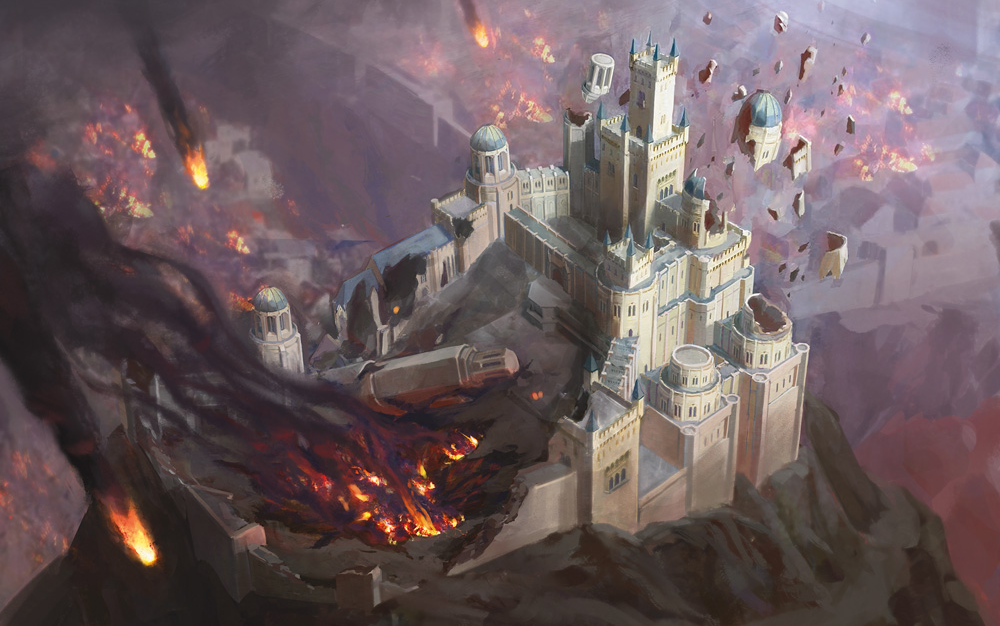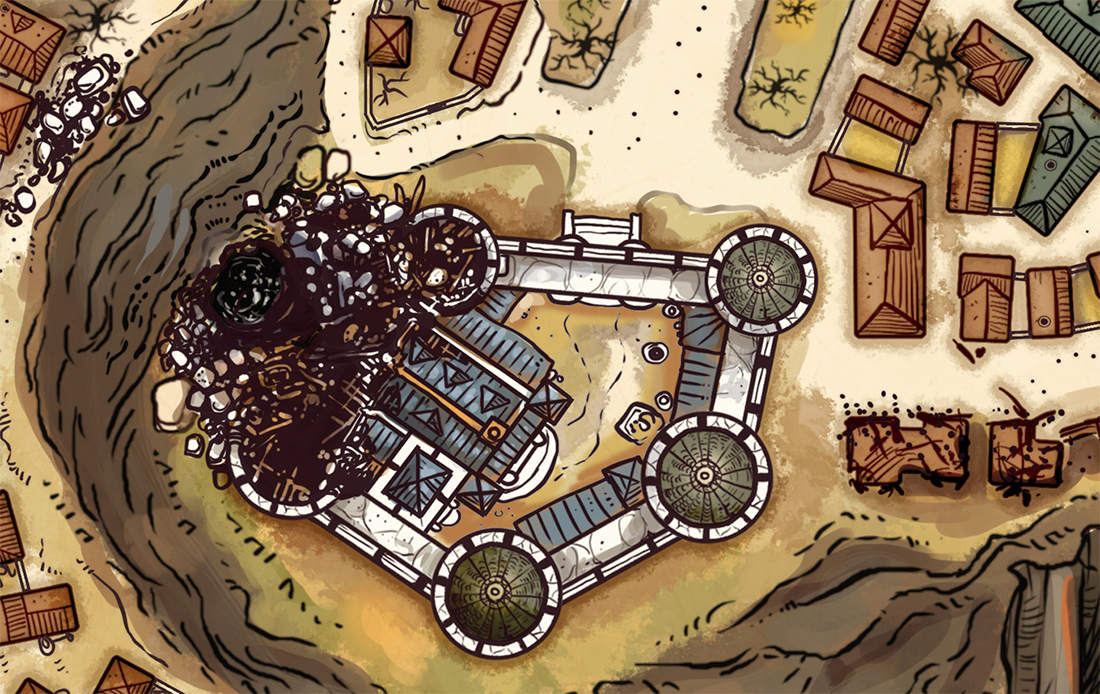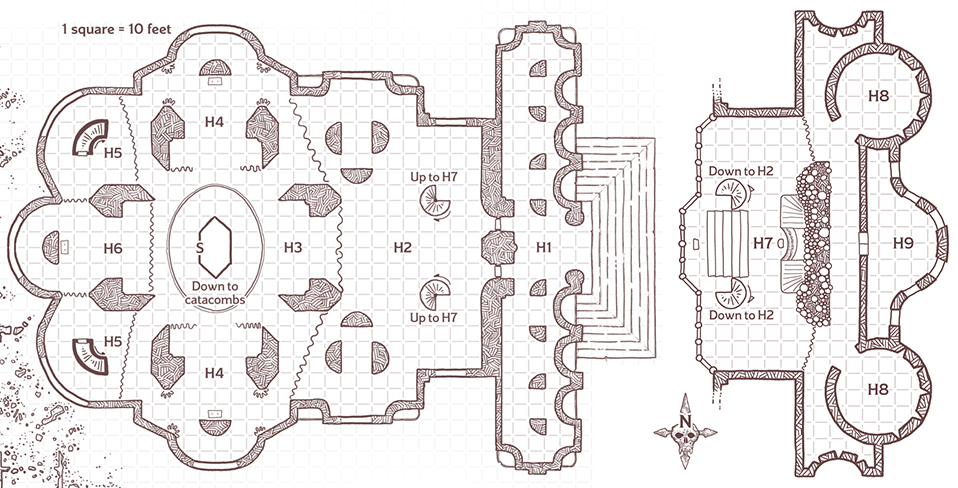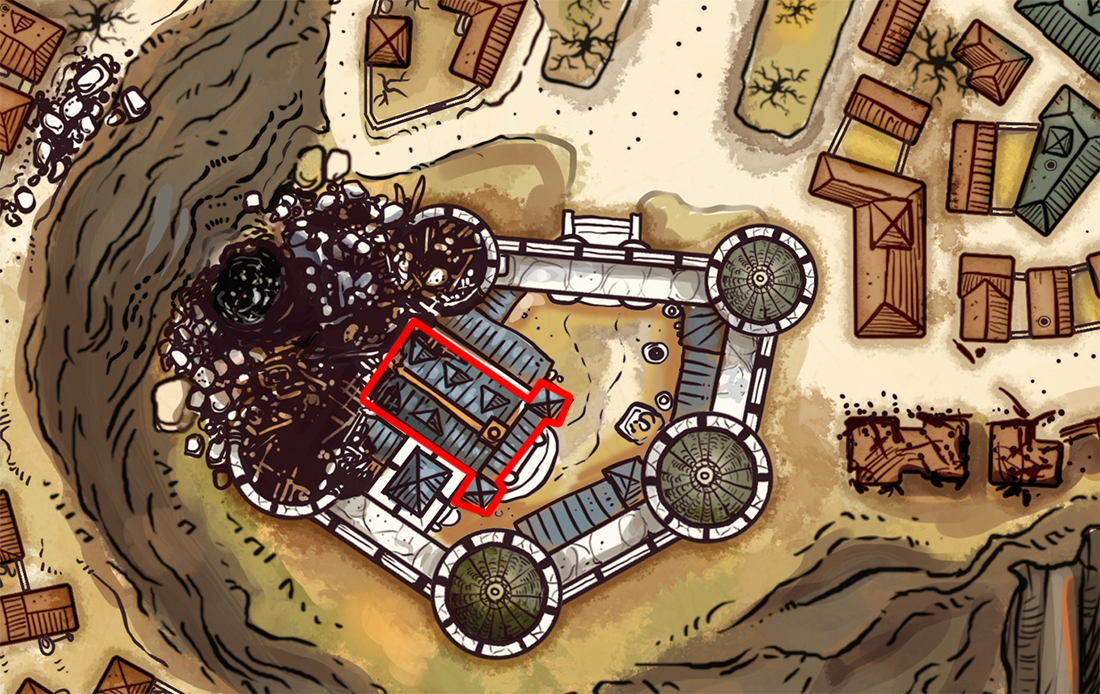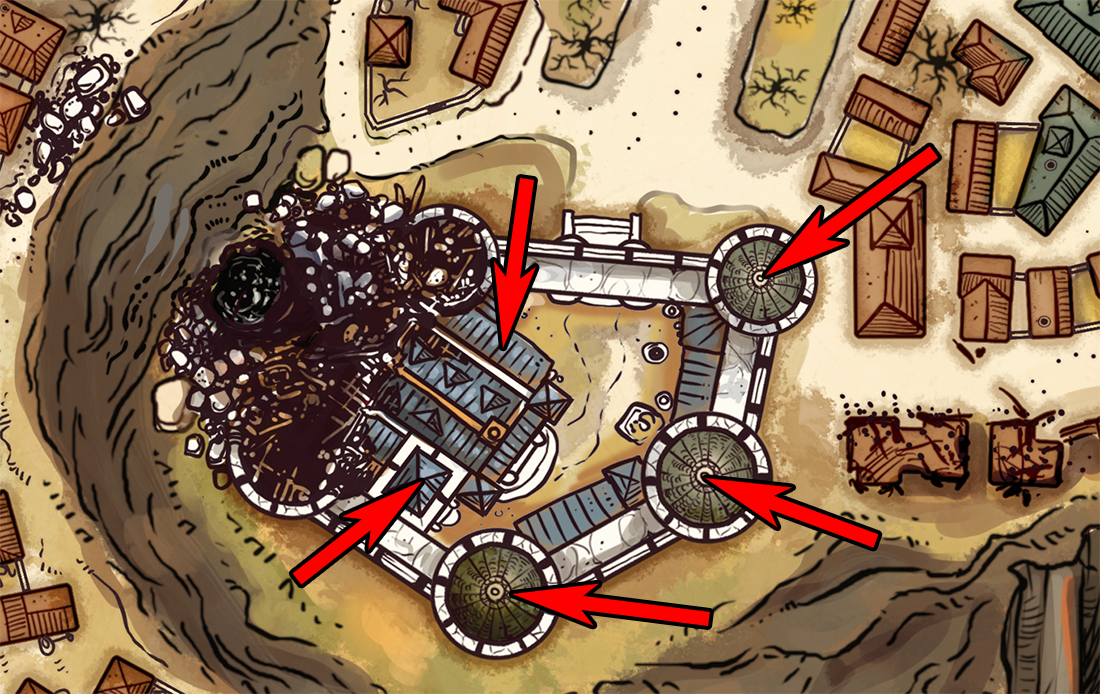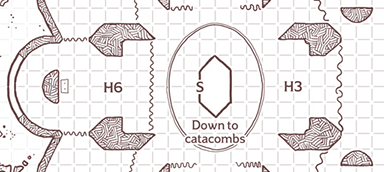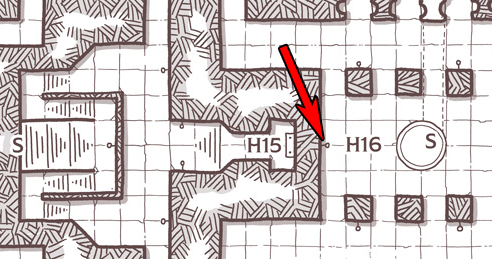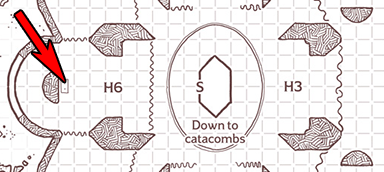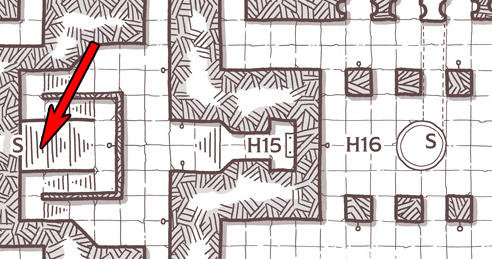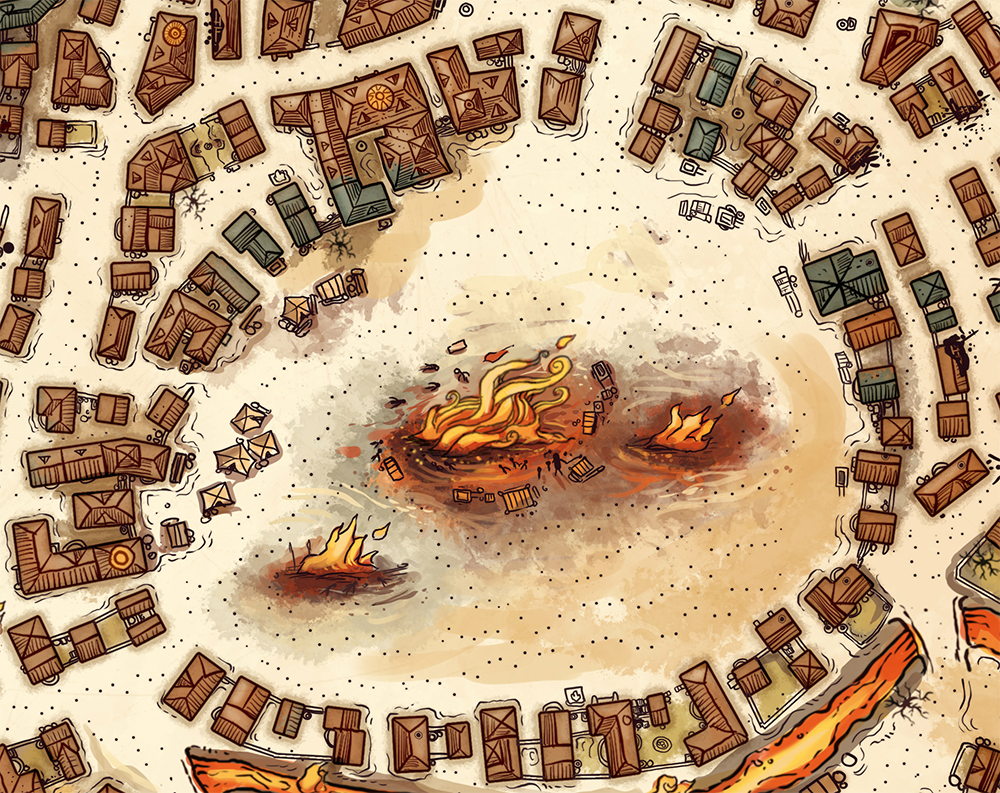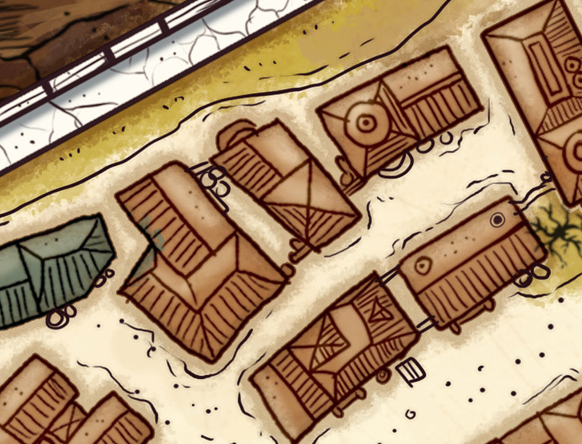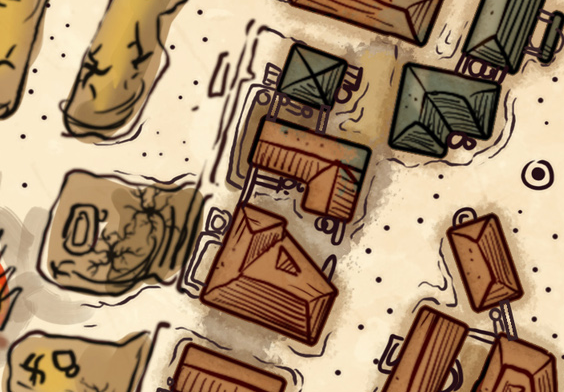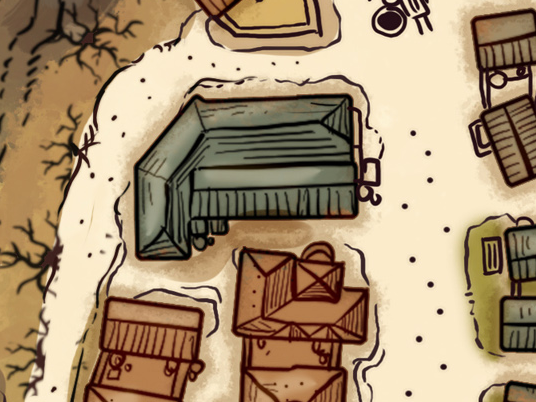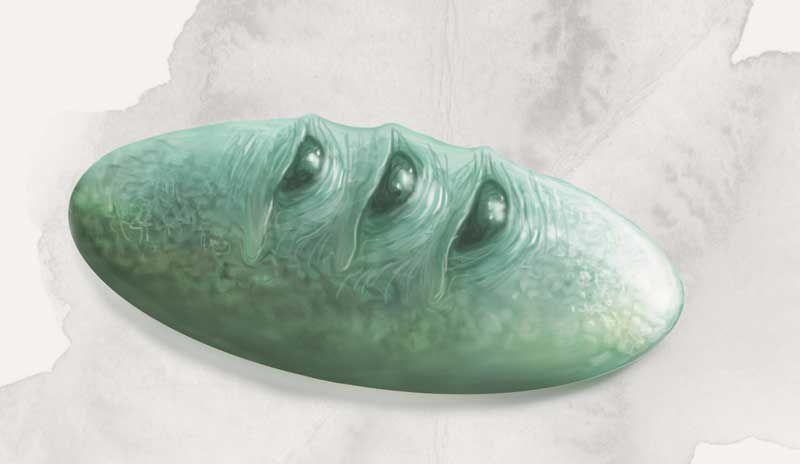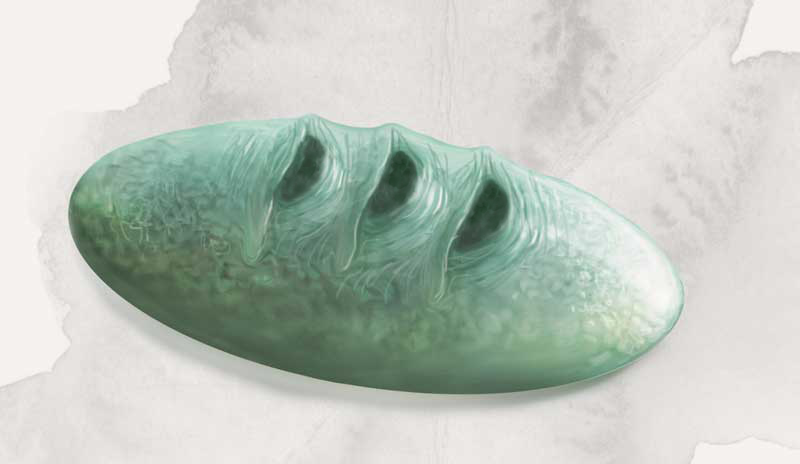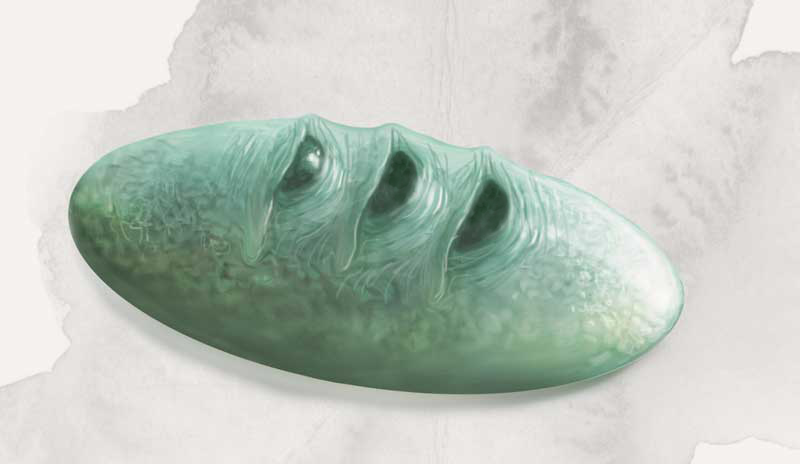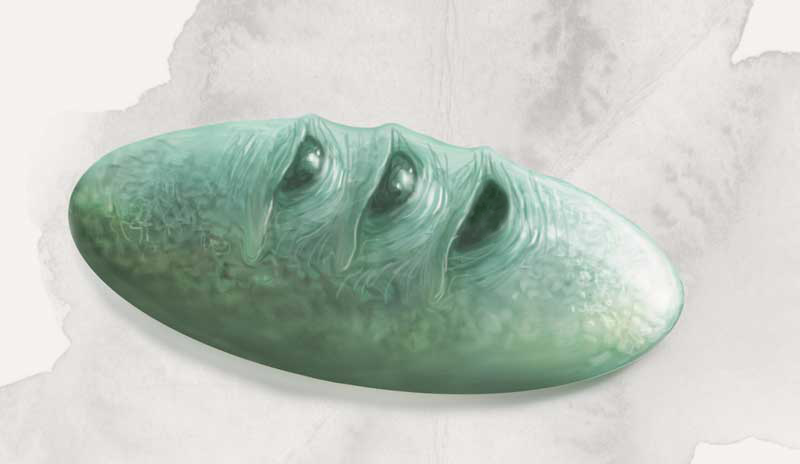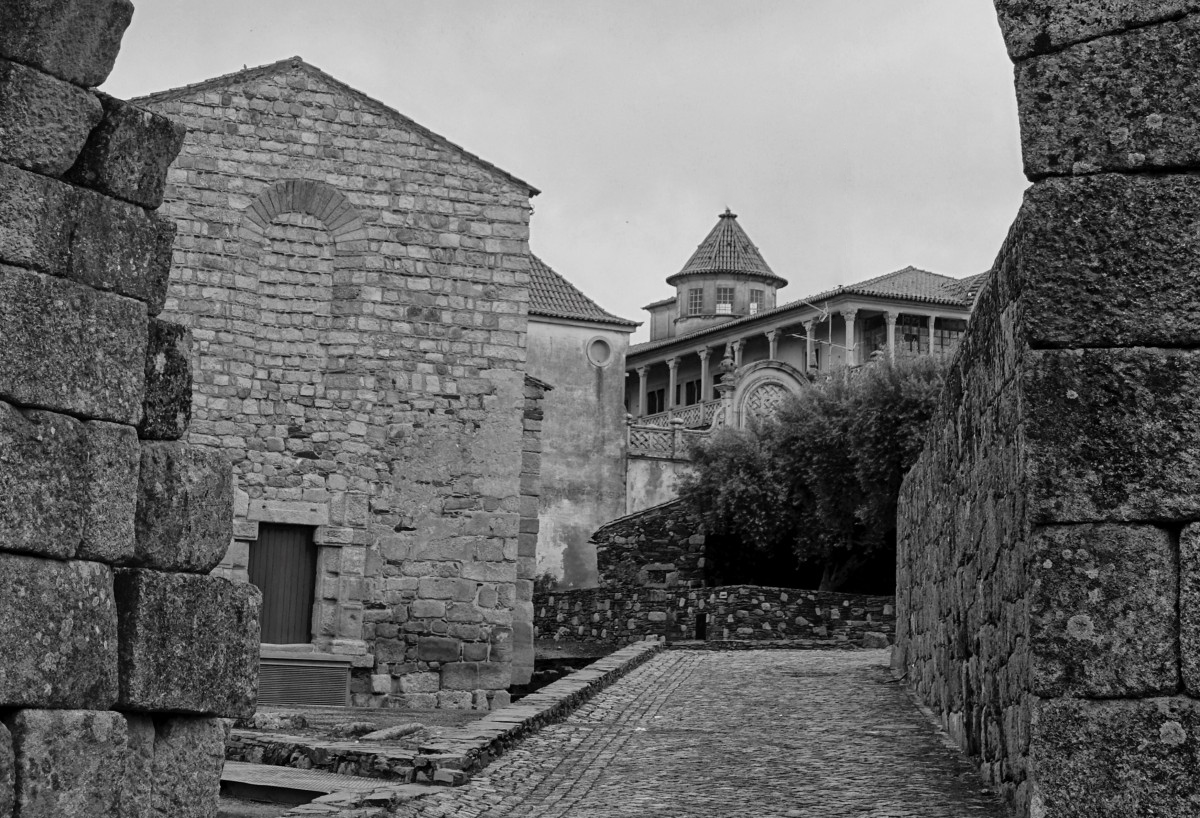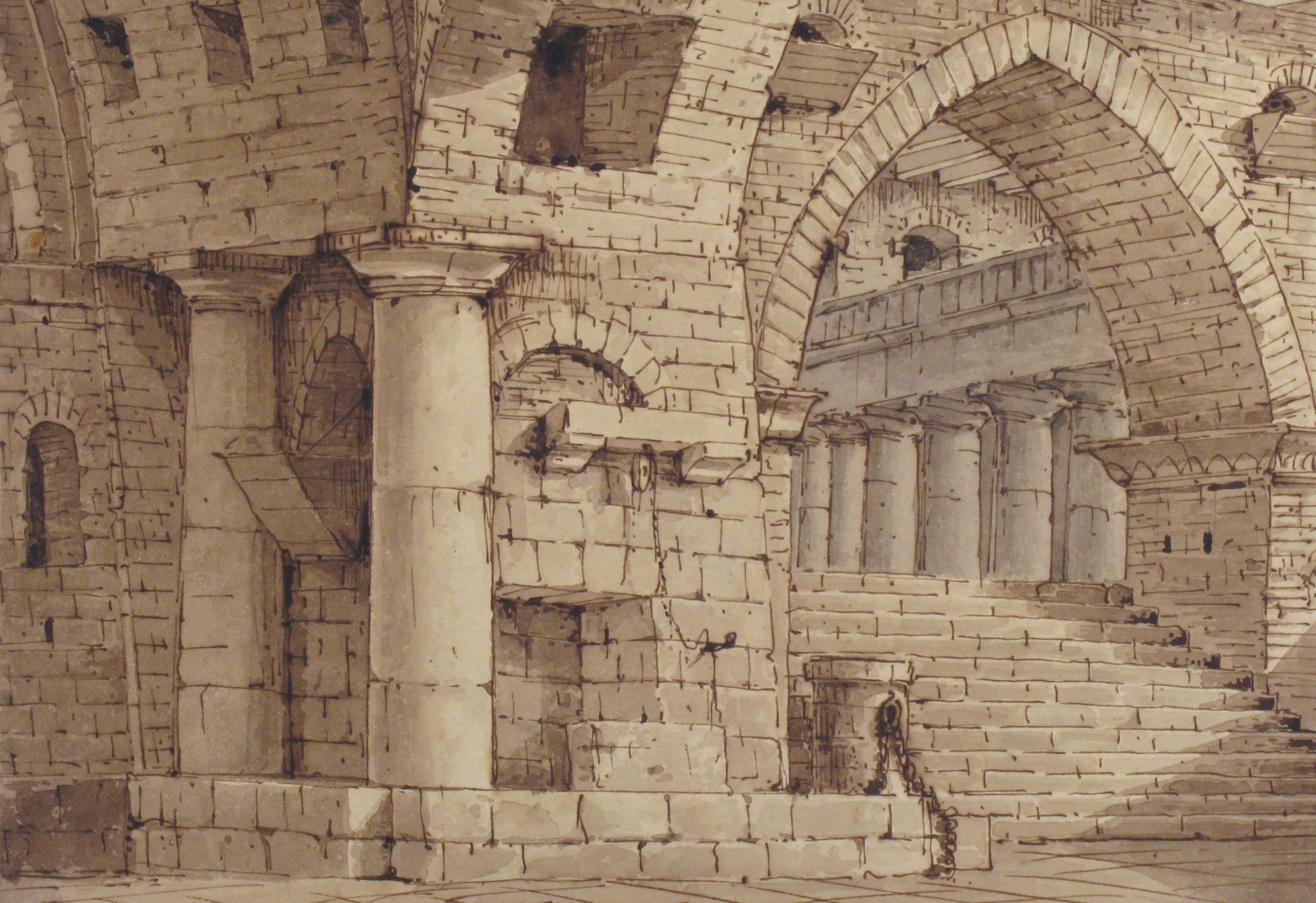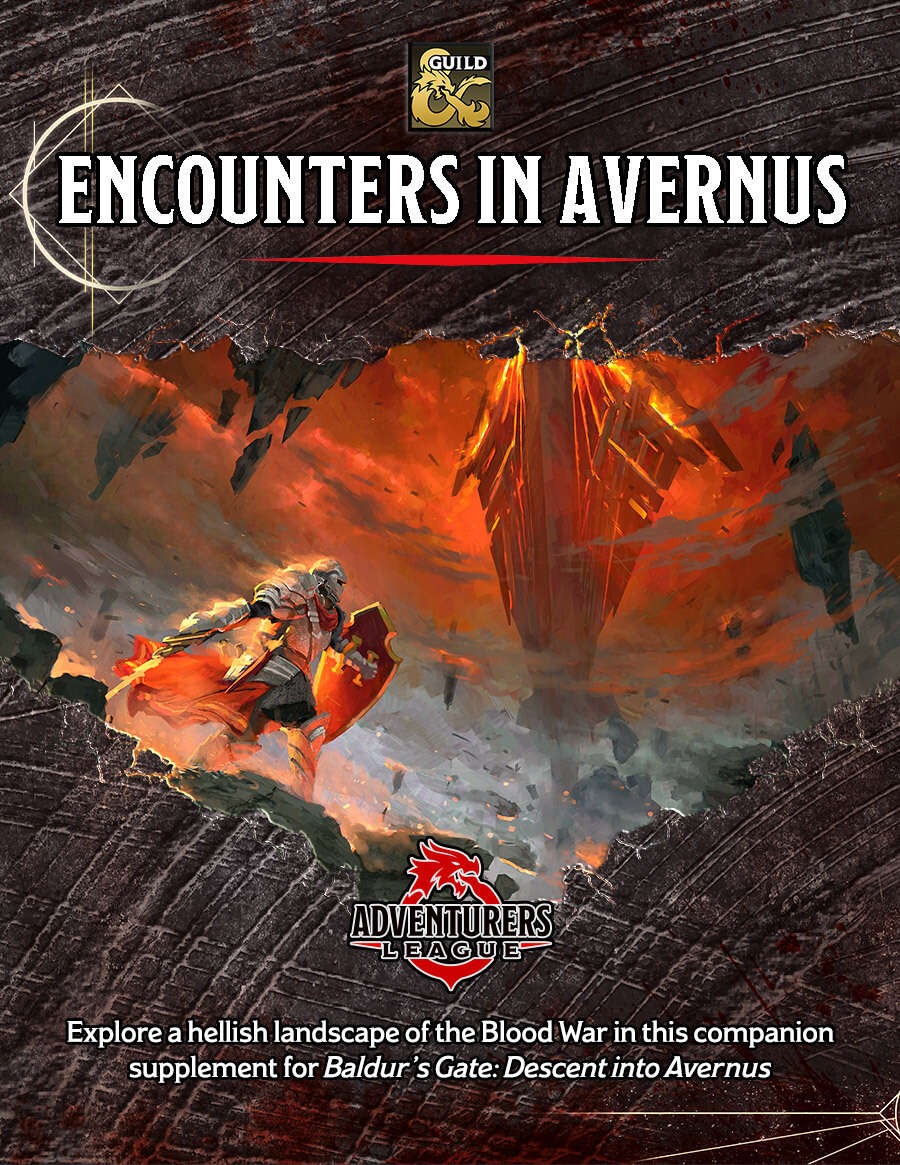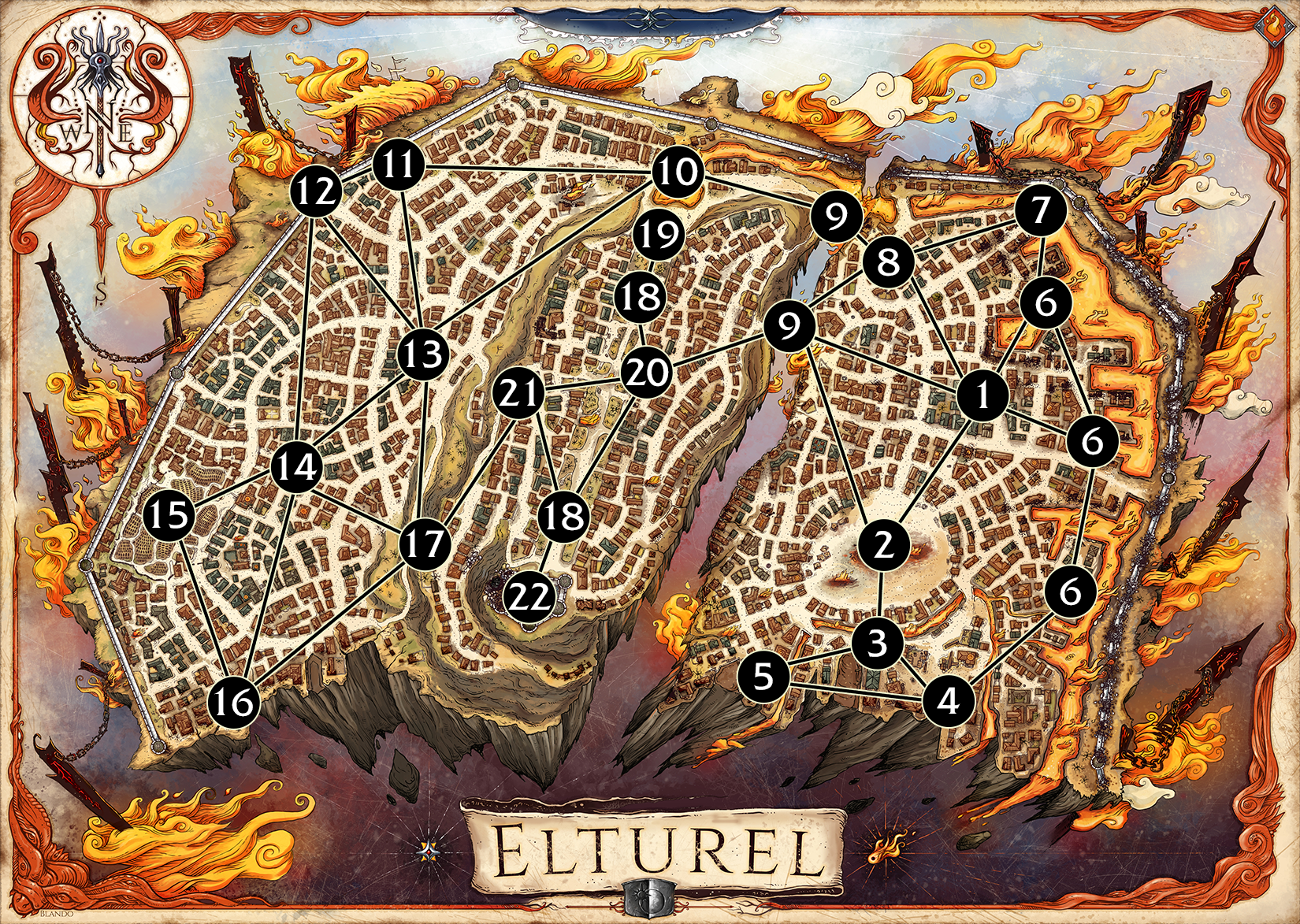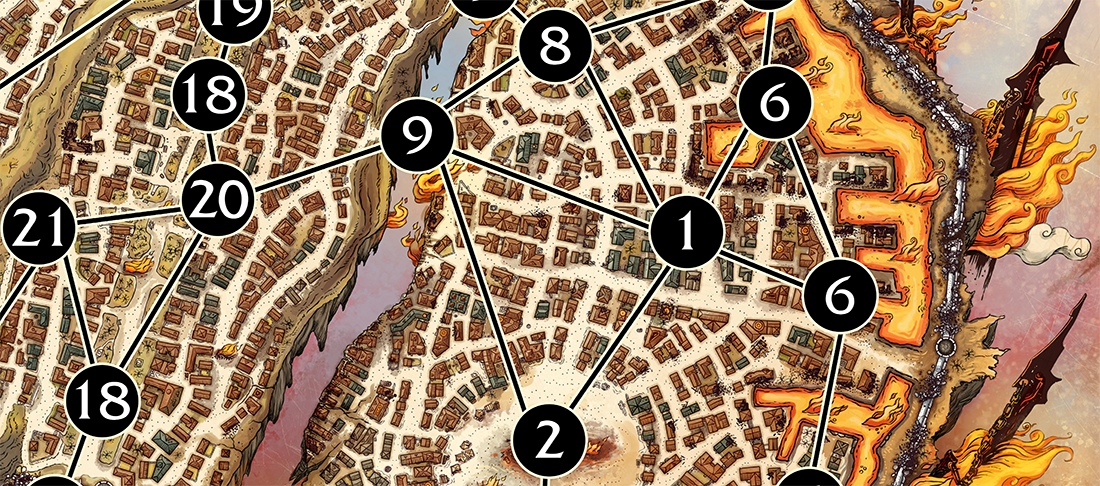There are three different versions of the High Hall depicted in Descent Into Avernus. The first is the fantastic graphical image above.
The second is depicted on the city map of Elturel:
You can immediately see that the map and image don’t line up.
The third version of High Hall is the one mapped on p. 61-62 of the book:
Now, if you kind of squint (and ignore the windows and compass rose), you could probably make the map of High Hall roughly match this bit of the Elturel city map:
But if that’s the case, then what’s going on with these bits:
What’s going on in those towers?
For me, personally, the most interesting version of High Hall is almost certainly the image: All those floating bits of wreckage held aloft by some strange magical interaction between the holy temple, the meteor, the ritual, and possibly just the strange nature of Avernus itself are tantalizing and unique.
I bring this up mostly because we’re going to be talking, in part, about stuff we’d like to add to the High Hall, and you can seize any or all of this inconsistency as opportunity, inspiration, or both when figuring out how to slot that stuff in.
ABUSING SECRET DOORS
In Part 3F of the Remix, we talked about why putting a Must Have Encounter™ on the opposite side of a secret door is a bad idea.
The basic structure of the scenario here is that the PCs need to go to High Hall and, once there, speak with Pherria Jynks, who will send them on a quest to find Grand Duke Ravengard (who has gone to the Grand Cemetery to retrieve the Helm of Torm’s Sight).
And, yup, they’ve got Pherria behind another secret door:
I thought this secret door might exist because the designers were trying to justify why Jynks and the refugees she’s protecting haven’t been killed by devils yet (because the devils haven’t found the secret door), but that’s not it: The catacombs are already crawling with devils.
As we discussed in Part 3F, the easiest solution for this sort of thing is usually to just remove the secret door. I’d basically do the same thing here, but with a twist: We’re going to leave the existing secret door in place, but have it lead directly to Area H16 where Jynks and the refugees are:
Finding the secret door is now a reward for the PCs: If you find it, you can skip the devil-infested catacombs.
Meanwhile, back up on the top level there are actually TWO altars: The one in H6 has been desecrated by devils.
So what we can do is make “stairways hidden in altars” a design feature of the High Hall. The secret door in the desecrated altar has been ripped open by the devils (it’s no longer secret and actually serves as a clue that there might be stairs hidden in the other altar) and leads down to the ORIGINAL stairs on the map of the catacombs:
We now know how the devils got into the catacombs and we’ve eliminated the secret door chokepoint.
FIXING SECRET DOORS:
- Secret door at H3 leads to H16.
- Add “secret” door (ripped open) to H6, leading to the stairs west of H15.
GRAND DUKE RAVENGARD
As noted, in the adventure as published Grand Duke Ravengard has left the High Hall and gone to the Grand Cemetery to retrieve the Helm of Torm’s Sight. Pherria Jynks tells the PCs where he’s gone. They follow him and find him having a metaphysical fit with the helmet on his head. They bring him back to Pherria, she performs a ritual which cures the metaphysical ailment, and Ravengard tells them about the cool vision the helmet gave him.
The net effect of all this is to needlessly deprotagonize the PCs: Instead of getting to be the awesome heroes who fetch the artifact and receive a cool divine vision, they’re the ones who get to go pick up the hero and then hear about the cool vision he got.
This can be fixed by simply NOT having Ravengard go to get the Helm of Torm’s Sight. Instead, Ravengard is still in the High Hall when the PCs arrive. He and/or Pherria Jynks know about the Helm of Torm’s Sight, but they haven’t been able to spare the resources to retrieve it. Oh, hey! PCs!
(This notably requires almost no changes to the Grand Cemetery except to ignore the descriptions of Ravengard and his men. We’ll look at this in more detail in Part 5E.)
THE RAVENGARD SITUATION: Ravengard came to Elturel on a diplomatic mission to discuss the rise of cultists in the Fields of the Dead. (This includes the Cult of the Dead Three and Tiamat’s Cult of the Dragon.) When Elturel was sucked into Hell, the wary Ravengard managed to rally his men and cut his way out of an ambush by the newly erupted Hell Knights. Gathering a motley band of lower-ranking hellriders and paladins who had not been immediately transformed, Ravengard managed to secure the High Hall in the confusion following a meteor strike that wiped out a third of the fortress.
Ravengard came to Elturel with twenty men. Only twelve of them survive, but his ranks have been strengthened with Elturian knights. His current force – which has come to be known as Ravengard’s Peacekeepers — numbers slightly over forty, but most of them are out in the city (gathering supplies, seeking additional allies, trying to secure the city and bring succor its citizens). At the moment only six other knights are with him here in the High Hall.
Ravengard actually stretched his forces too thin. When a group of devils assaulted the High Hall, he realized he didn’t have the strength to repel them and retreated into the crypts (Area H16). He’s waiting for some of the peacekeepers out in the city to return in enough strength to drive the devils out… but, hey, the PCs work, too.
Design Note: The devils can be either a force of Hell Knights or a surprisingly large group of Avernian raiders. Mechanically, it doesn’t make any difference.
Alternatively, skip the whole thing and just have Ravengard and his peacekeepers firmly in control of the High Hall when the PCs arrive.
RAVENGARD’S COUNCIL: Ravengard has rallied what local leadership he can (although between the meteor and the eruption of the Hell Knights, it’s pretty thin):
- Pherria Jynks is effectively the highest ranking member of the Church of Torm in Elturel. She’s the spiritual bedrock for her people right now. Some have talked about making her High Observer, but she’s quashed those discussions. She knows that High Observer Kreeg had left the city shortly before its fall and hopes that he will somehow return to them with aid. (Note that Pherria carries the Tome of the Creed Resolute, as described in Part 4B, with her everywhere she goes. “Recall the Creed,” she says, as a bedrock of certainty in horrifically uncertain times.)
- Wöbaer Triest was an undersecretary of the Elturian treasury. Now self-billed as the Acting Secretary, he’s more or less the civilian government of Elturel.
- Lor Ryken was the Elturian ambassador for Iriaebor. He’d returned to Elturel to deliver a recently negotiated trade treaty. Ryken has been handling a lot of the logistics in terms of supplies for the peacekeepers.
- Hilde Kaas is the highest ranking Elturian knight to have survived the cataclysm. There are some who question why Ravengard, a foreigner, should be in charge. Hilde isn’t one of them, and her staunch, unwavering support helps to hold the peacekeepers together.
WHAT THEY KNOW:
- The High Knights became the Hell Knights when the Companion was transformed. They also know that when Elturian knights are killed, they transform into devils, but that Ravengard’s men do not. (Many of them actually saw the knights erupt into devils. They don’t know why.)
- Elturel is hovering above the Styx and seems to be slowly sinking. There are huge chains attached around the perimeter of the city. (However, they don’t know the full truth of how or why Elturel fell.)
- There’s somebody organizing supplies in the east out of Shiarra’s Market. (They don’t know it’s High Rider Ikaia, or even that it’s vampiric.)
- There are devils wandering the streets, but they don’t seem particularly organized.
- Ravengard has gotten enough reports of Zarielite cultists that he suspects a vast fifth column has infiltrated the city and is probably somehow responsible for their current predicament.
They do NOT know about Liashandra’s Demons.
DEVILS AT THE BARRICADES: Add barricades to the two hallways leading into Area H16. If the PCs didn’t wipe out all the devils on their way in, have them launch an assault on the barricades while the PCs are in the middle of speaking with Ravengard and his council.
ZARIEL CULTIST IN SHEEP’S CLOTHING: One of the refugees is actually a Zarielite cultist. Choose an opportune/dramatic moment for them to reveal themselves. Options include:
- When the devils attack the barricades, they take advantage of the confusion to attempt to assassinate Ravengard.
- They secretly poison the water supplies. Refugees get sick, but between Pherria and the PCs it’s likely no one dies. However, they need to secure a new supply of water.
- They attempt to steal or destroy the Helm of Torm’s Sight. Or perhaps seek to disrupt the ritual to free the wearer.
NEW LOCATIONS
As you’re fleshing out your version of the High Hall, here are a few things you might think about adding.
The Secret Exit. Area H17 of the High Hall is an escape tunnel that goes… nowhere. It currently dead ends at the edge of the earthmote that Elturel is floating on. Couple thoughts:
- You could re-characterize this as having originally led down into the Maze.
- It could still lead into the Maze.
- It could be a legitimate escape tunnel leading to a secret entrance near the West Docks. This would add a hidden route to the Elturel pointcrawl.
Thavius Kreeg’s Office. Kreeg probably destroyed or took with him anything meaningful or incriminating here. But perhaps not if there’s a revelation that the PCs are still struggling to figure out. Either way, this will provide a nice bit of direct connection to the Baldur’s Gate portion of the adventure. Details might include Kreeg’s portrait on the wall, perhaps arrayed with portraits of the previous High Observers.
Sanctum of the Cult of the Companion. It would be nice to have a secret sanctum where Zarielites in Elturel’s government held secret religious rites. I recommend adding secret doors to Area H14 and putting it there. (Move the Council Chambers upstairs or to one of the surviving outer towers.)
Supply Cache. The peacekeepers have been collecting supplies, both for the refugees housed at the High Hall and for distribution throughout the city. They may have converted one of the surviving towers to this purpose, in which case it would be demesne of Ambassador Ryken.
Floating Shrine. Going back to the picture of High Hall, I’m drawn to the idea of having a shrine to Torm located in the floating cupola. (Perhaps that’s why it’s floating! The holinesss of Torm’s shrine resisting the corruption and draw of Avernus.) You could place another holy artifact of Torm up here to reward PCs who go exploring. (And if it is the holiness of the shrine + artifact that’s keeping the place afloat, as soon as the PCs grab the artifact the whole thing is going to come crashing down!)

